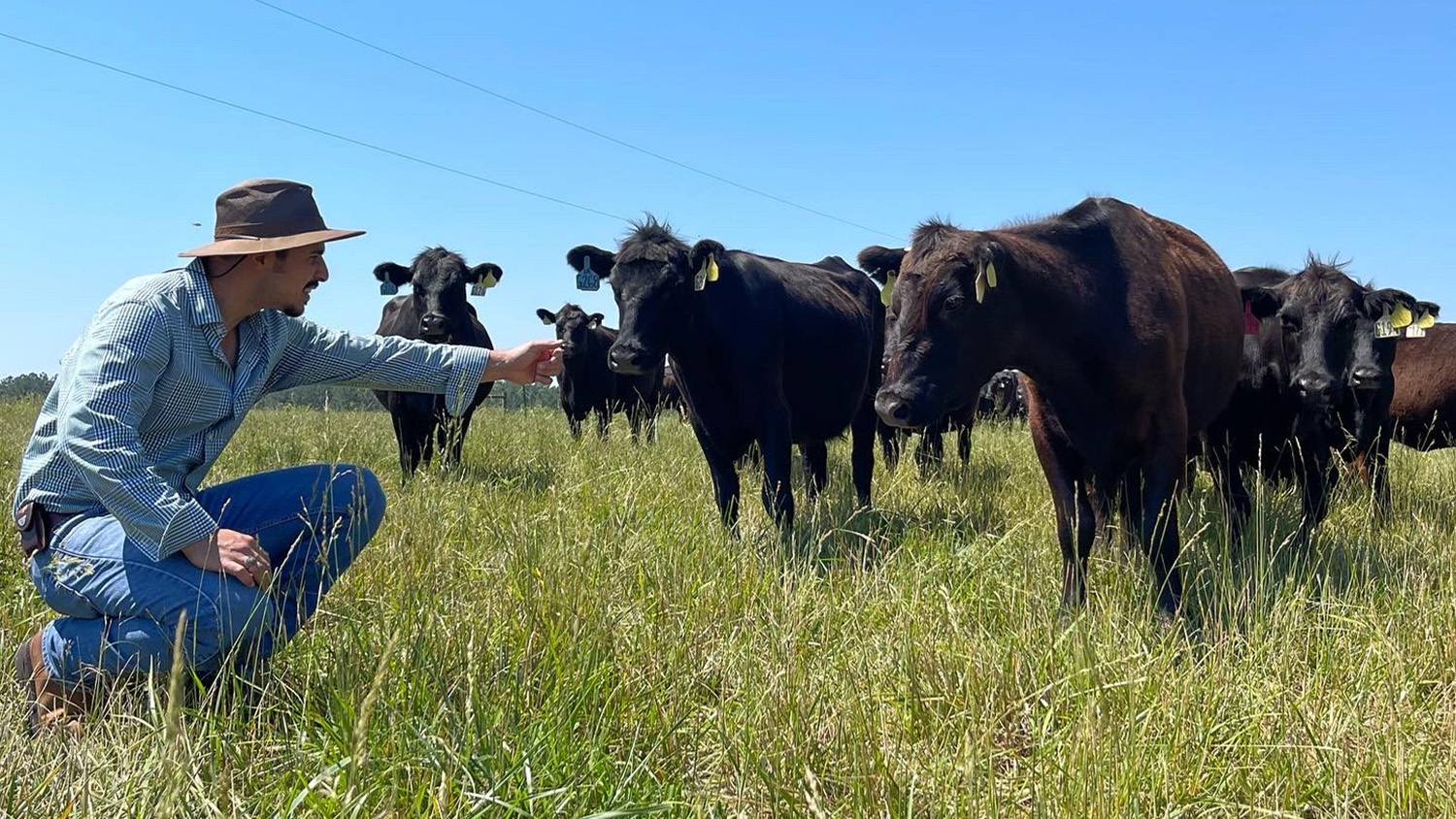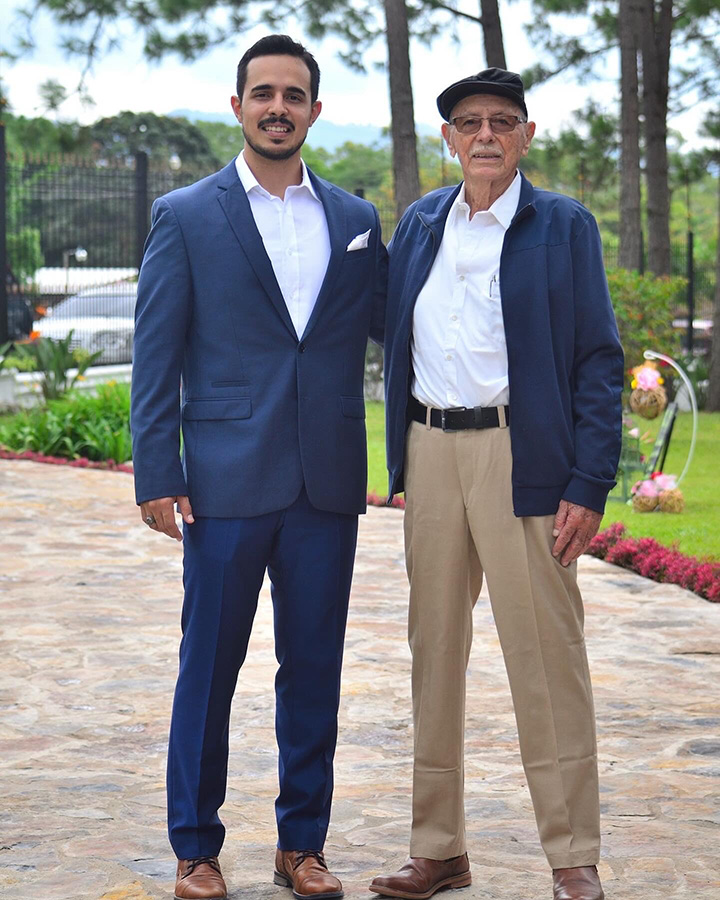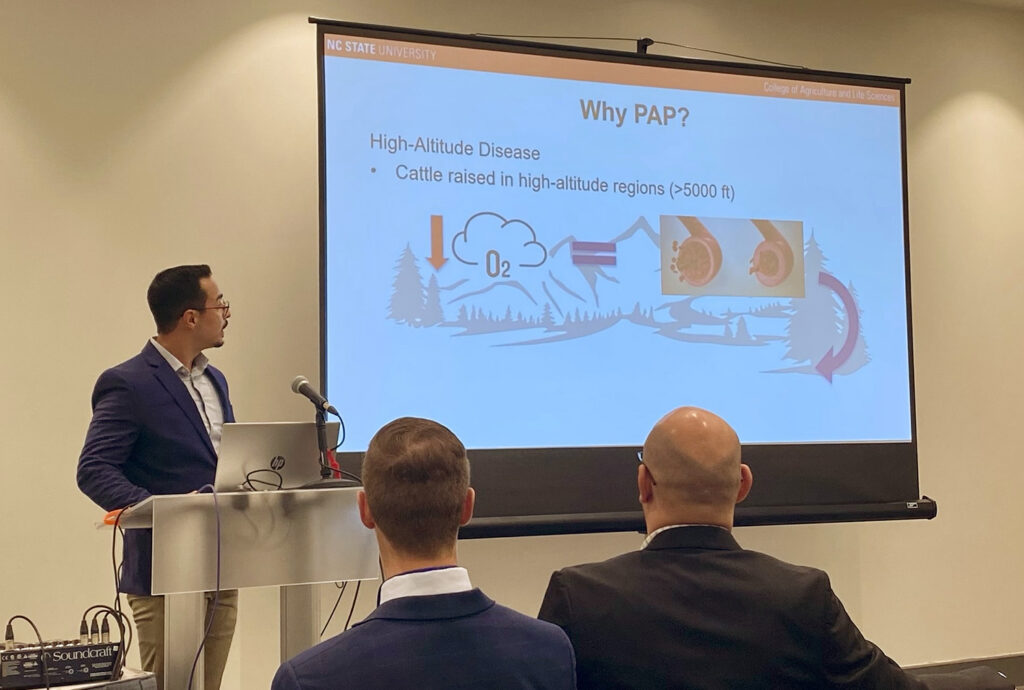Heeding the Cattle Call

By Lara Ivanitch
Doctoral student Benjamin Rajo’s first trip to NC State University four years ago was fraught with uncertainty. In a race to leave Honduras before category 4 hurricane Eta hit, he and his wife, Carolina, traveled to Ramon Villeda Morales International Airport, passing streets flooded by rain from the storm’s outer edges. Inside the terminal, lines of travelers waited, unsure if they would fly that day. Once in the air, the turbulence was terrifying.
“We thought that we were going to crash,” recalls Rajo .
When the plane cleared hurricane Eta’s cloud cover and steadied in the cerulean stratosphere, Rajo’s sights were focused on NC State’s Department of Animal Science.
A Call to Cattle
Rajo’s childhood in pastoral Siguatepeque, Honduras, looked much like that of a kid in rural North Carolina. He spent many afternoons and weekends doing chores on his mother’s 30-acre farm. During school breaks, he learned to tend cattle on the nearly 700-acre farmstead of his grandfather and namesake, Abuelito Mincho.
Early in his life, Rajo’s mother rescued a pregnant cow slated for slaughter. Afornunada (the lucky one) soon birthed a bull calf. Rajo’s grandpa traded the bull calf for a heifer that, much to Rajo’s delight, became his to raise.
“At 4 years old, I had a heifer,” he says. “I was so happy because I had a pet that was not like a cat or a dog. It was a cow!”
Eleven years later, Rajo’s herd had grown from one to 98, and its sale paid his tuition to Zamorano University. There, hands-on learning supplemented the farming skills he had learned from his grandfather.

A Research Passion Ignites
Rajo discovered a love for research while managing a cattle farm in mountainous northern Honduras. In 2012, the recent college graduate began working to regain the farm’s economic viability. In addition to implementing a vaccination schedule and planting legumes to improve forage quality, he conducted experiments, like feeding weaned bull calves a supplement to their grazing, resulting in increased growth rates.
In 2019, Rajo approached the owner with another idea: “planting some of the lots with crops to increase biodiversity and provide another source of income.” But the owner, satisfied with the existing improvements, didn’t want to make any more large investments in the farm. While Rajo understood, his motivation to continue managing the farm waned.
In 2020, after leaving the cattle farm, Rajo reached out to graduate programs, seeking opportunities for academic research. However, the pandemic cast a shadow of uncertainty on the future — he received zero responses.
That fall, a fellow Zamorano graduate pursuing her master’s in poultry science at NC State, convinced Rajo to visit the school. “I thought, I’m just going to go walk into the Department of Animal Science and start knocking on doors.”
With luck and tenacity, Rajo connected with Professor Daniel Poole. At the end of a lengthy conversation at the Beef Cattle Unit, Poole offered Rajo a position in his lab. “This is exactly what I am looking for,” he recalls saying. “Where do I sign?”
As a graduate and doctoral student in animal science, Rajo’s research has focused on physiological changes caused when beef cattle consume ergot alkaloids. Although these substances are created by a fungus that proves beneficial to tall fescue — the predominant forage in the region, most of which is infected by the fungus — ergot alkaloids can cause fescue toxicosis in cattle. The disease causes slow growth rates, increased body temperatures and retention of thick winter coats, costing the industry an estimated $1 billion each year.

Cattle Career Aspirations
After completing his doctoral degree next year, Rajo, who received a grant from the Hispanic American Chamber of Commerce this summer in recognition of his research, hopes to provide cattle managers and farmers with practical ways to mitigate common causes of slowed growth and increased need for feed.
Whether working in a private lab or at a university, he wants to ensure the industry that has shaped his life can remain profitable and sustainable, particularly in the face of obstacles like changing weather patterns.
“We should have a proactive approach,” he says. “We should start looking for ways to improve efficiency and productivity in spite of environmental challenges.”
This post was originally published in College of Agriculture and Life Sciences News.